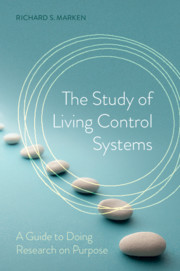
How should we go about trying to understand the behavior of people and other living organisms? One way is to look for its causes. This is the approach taken by most scientific psychologists and is the one taught in most courses on research methods in psychology. Using this approach, the causes of behavior are inferred from the results of experiments that look for relationships between independent (stimulus) and dependent (behavioral) variables. If such a relationship is found, and the experiment has been done under properly controlled conditions, then the independent variable can be considered a cause of variations in the dependent variable.
Another way to try to understand behavior is to look for its purposes. This is the approach that people often use to figure out what another person is doing. It involves testing guesses about what the purpose of the behavior might be. For example, a mother is using this method when she tries to understand the crying of her infant by testing her guesses about whether its purpose is to get fed, cleaned, or comforted. This approach to understanding behavior has been largely ignored by scientific psychologists because it assumes that behavior is purposeful.
Purpose has been a problematic concept in the behavioral sciences because it seems to violate the laws of cause and effect. In purposeful behavior cause and effect seem to work backwards in time; a future effect – the result being purposefully produced – seems to be the cause of the present actions that produce it. But this problem of apparent reverse causality was solved by William T. Powers who realized that what we see as purposeful behavior is a process of control, which has a perfectly good scientific explanation in the form of control theory.
Control involves acting to produce intended (purposeful) results in the face of disturbances that would otherwise prevent those results from occurring. Control theory explains how this controlling works. Powers showed that, when properly applied to organisms, control theory explains purposeful behavior as control of the perceived results of action; hence the title of Powers’ most important book Behavior: The Control of Perception (Powers, 1973). Understanding the purposeful behavior of organisms – the behavior of living control systems — is, therefore, a matter of determining the perceptions that organisms control. Powers described methods that could be used to do this — what could be called methods for doing research on purpose. These are the methods described in The Study of Living Control Systems (SLCS).
Research on purpose is in its infancy. I wrote SLCS to encourage others to try this approach to psychological research under the assumption that many hands will make light work of moving this kind of research into the mainstream of psychological science. This blog exists for those who want to ask questions about or provide comments on the material presented in SCLS. But it also exists for students of behavior – psychologists, neurophysiologists, ethologists, sociologists, economists, etc. – who are willing to take the plunge and give this kind of research a try. There is still much about the technical aspects of doing research on purpose that can only be learned by doing it. I believe that those who do get involved in doing this kind of research – myself included – will benefit greatly from sharing their experiences on this blog.
Powers, William T. (1973). Behavior: The control of perception. Chicago: Aldine de Gruyter.

Latest Comments
Have your say!